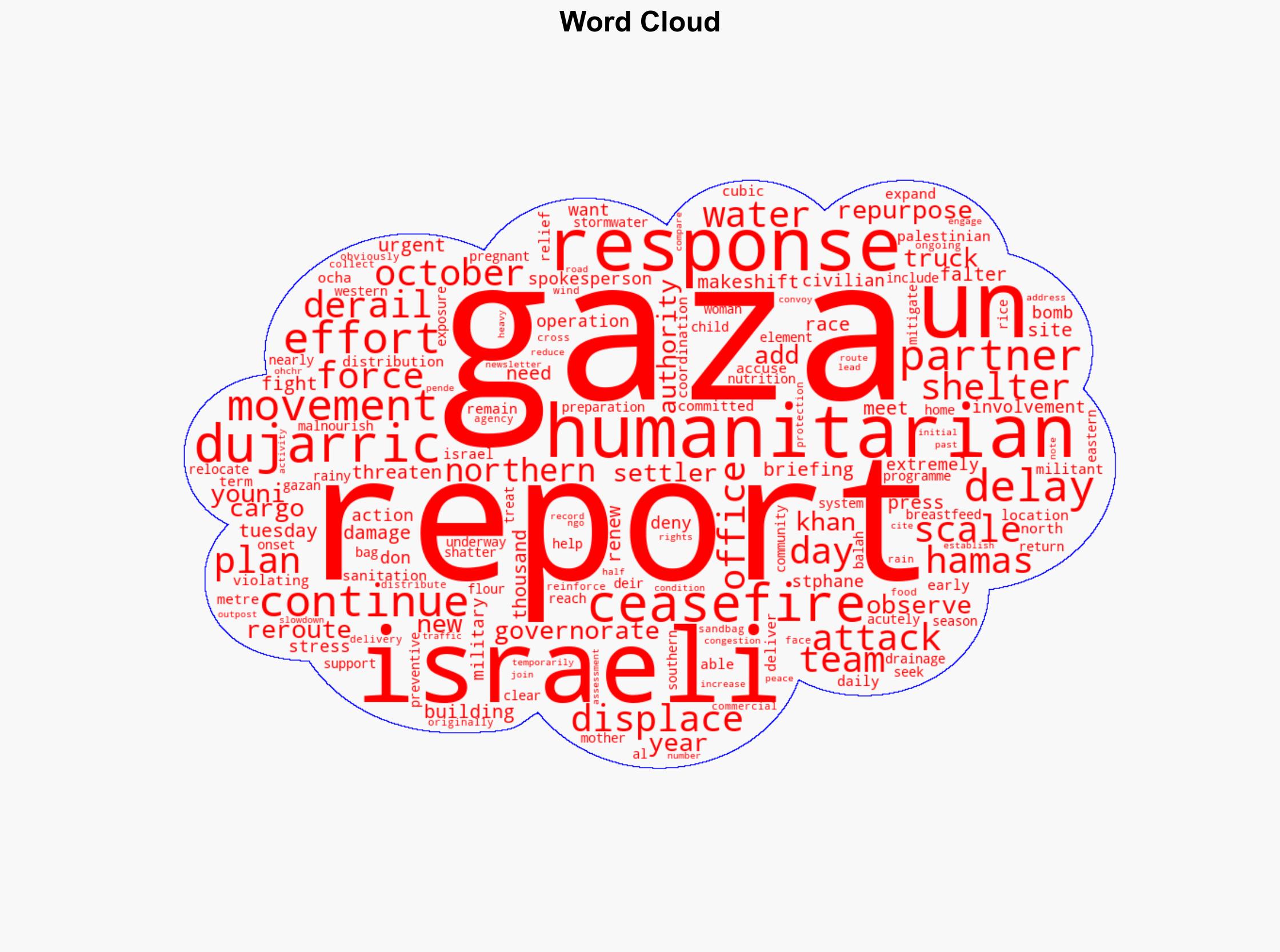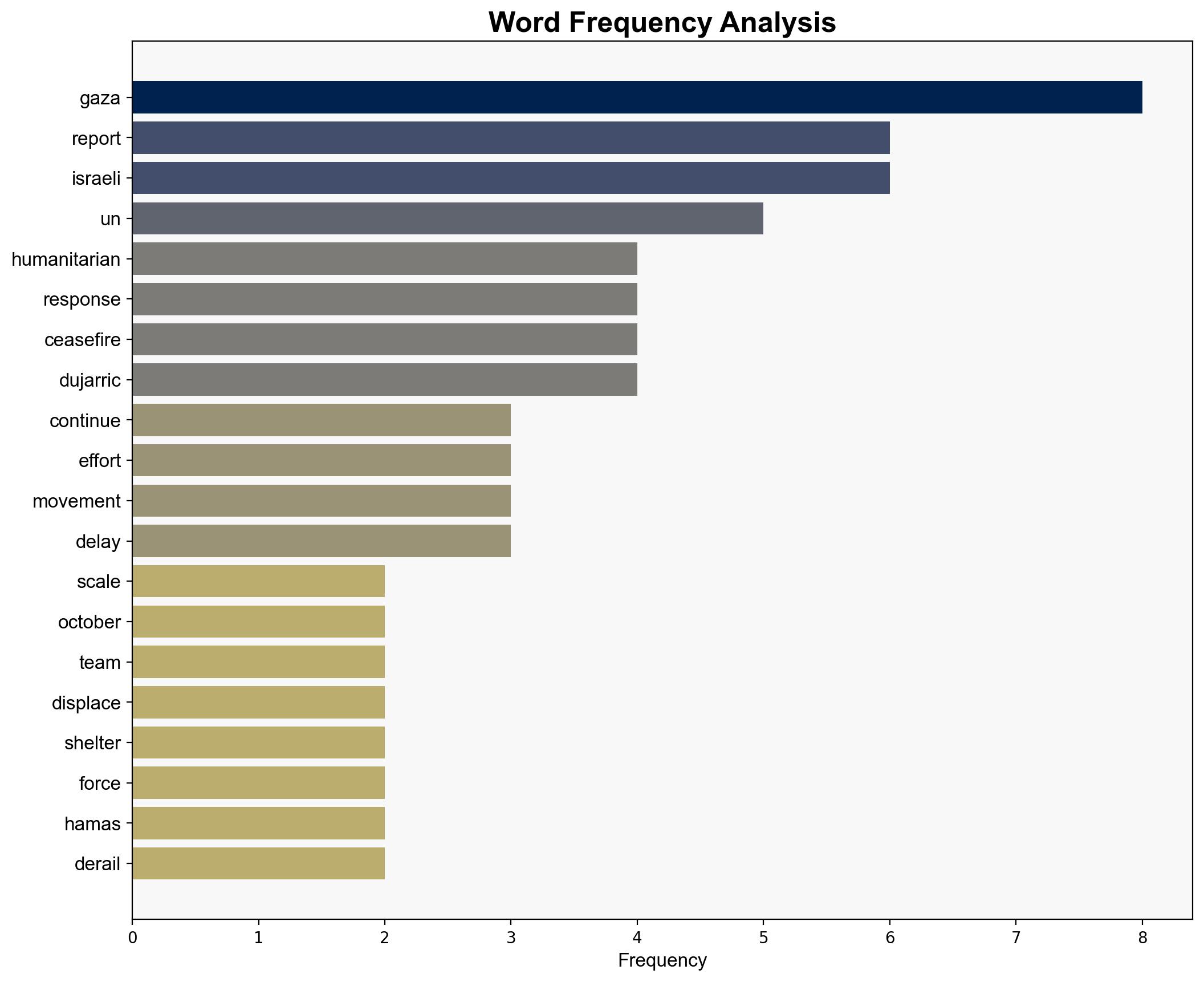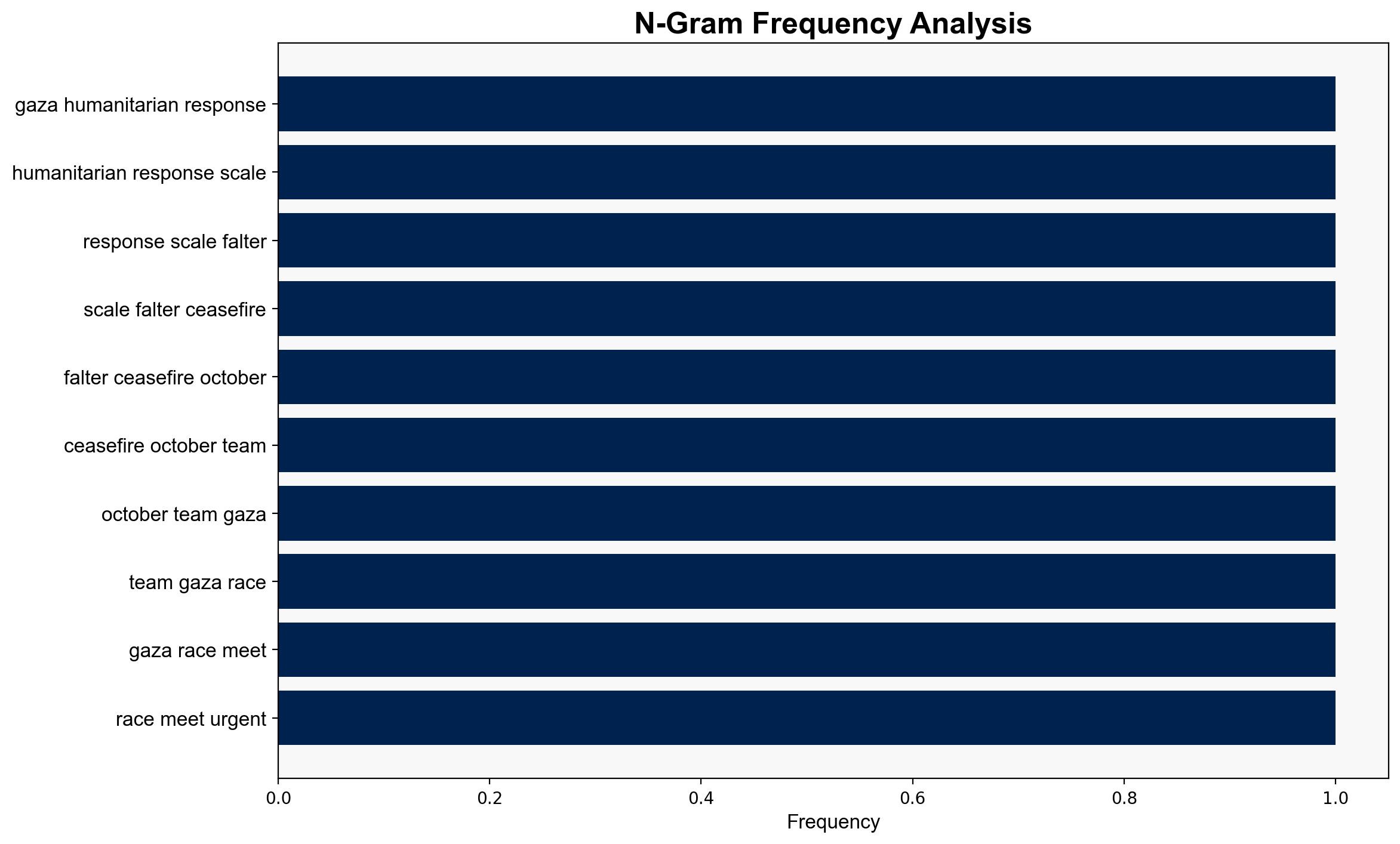Gaza Humanitarian response scaled up amid faltering ceasefire – Globalsecurity.org
Published on: 2025-10-29
Intelligence Report: Gaza Humanitarian Response Scaled Up Amid Faltering Ceasefire – Globalsecurity.org
1. BLUF (Bottom Line Up Front)
The humanitarian response in Gaza is being intensified amidst a fragile ceasefire, with renewed hostilities threatening to derail peace efforts. The most supported hypothesis is that both Israeli forces and Hamas are engaged in actions that undermine the ceasefire, either directly or through proxy activities. Confidence Level: Moderate. Recommended action includes diplomatic engagement to reinforce ceasefire terms and ensure unhindered humanitarian aid delivery.
2. Competing Hypotheses
1. **Hypothesis A**: Israeli forces and Hamas are both actively undermining the ceasefire through direct military engagements and strategic posturing, leading to increased humanitarian needs.
2. **Hypothesis B**: External actors or rogue elements within either Israeli or Palestinian factions are instigating violence to derail the ceasefire for political gain, while official entities remain committed to peace.
Using ACH 2.0, Hypothesis A is better supported due to reports of renewed fighting and accusations from both sides, suggesting a breakdown in ceasefire adherence. Hypothesis B lacks direct evidence of external manipulation but cannot be entirely ruled out.
3. Key Assumptions and Red Flags
– **Assumptions**: Both hypotheses assume that reported military actions are accurately attributed and that humanitarian efforts are genuinely aimed at relief rather than political leverage.
– **Red Flags**: Discrepancies between official statements and on-ground reports; potential bias in sources; lack of clarity on the role of non-state actors.
– **Blind Spots**: Limited insight into internal decision-making processes within Hamas and Israeli military command.
4. Implications and Strategic Risks
– **Patterns**: Continued escalation could lead to a full-scale conflict, severely impacting regional stability.
– **Cascading Threats**: Increased refugee flows, economic destabilization, and potential for international intervention.
– **Potential Escalation**: Cyber-attacks, increased settler activity, and retaliatory strikes could further destabilize the situation.
5. Recommendations and Outlook
- Engage in multilateral diplomacy to reinforce ceasefire terms and ensure compliance from all parties.
- Enhance monitoring and verification mechanisms to accurately attribute ceasefire violations.
- Scenario Projections:
- Best Case: Ceasefire holds with international mediation, leading to stabilized humanitarian conditions.
- Worst Case: Full-scale conflict resumes, overwhelming humanitarian efforts and destabilizing the region.
- Most Likely: Intermittent skirmishes continue, with periodic humanitarian access disruptions.
6. Key Individuals and Entities
– Stéphane Dujarric (UN Spokesperson)
– UN Relief Coordination Office (OCHA)
– Israeli and Palestinian military leadership
7. Thematic Tags
national security threats, humanitarian crisis, regional stability, ceasefire monitoring




